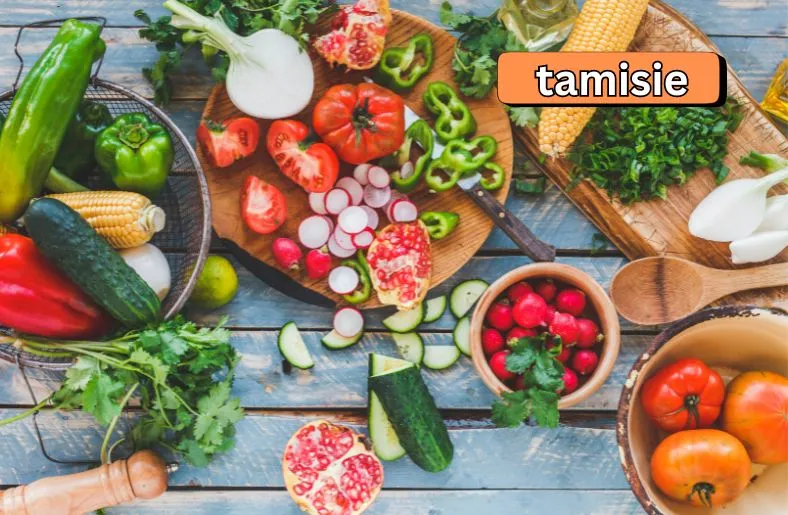Introduction
Tamisie is a French word that means to strain or sift. This simple act is very important in cooking. It helps make food smooth and tasty. Long ago, people in many cultures used tamisie. Today, it is still used by chefs everywhere.
Tamisie helps remove lumps from sauces, soups, and desserts. This makes them velvety and delicious. The technique has evolved over time, especially in French cuisine. Chefs use special tools like fine-mesh sieves to achieve perfect textures.
In this blog post, we will explore the history of tamisie, its cultural importance, and its practical uses in cooking. We will also look at modern innovations and the future of tamisie. Whether you love cooking or just enjoy eating good food, tamisie is a fascinating topic to learn about. Join us on this journey through the art of straining and sifting in cooking.
Historical Origins of Tamisie
Tamisie has deep roots in history, beginning in ancient civilizations. Long ago, people in Egypt, Mesopotamia, and China used simple sieves. They made these sieves from reeds or palm fibers. Farmers used them to separate grains from chaff. This early method laid the foundation for tamisie.
In ancient Egypt, tamisie was vital in milling grain. This process made bread-making easier and more efficient. Similarly, in Mesopotamia, people used tamisie for agriculture and pottery. They sifted clay to remove impurities, ensuring better quality pottery.
As time went on, tamisie techniques spread to Europe. During the Middle Ages, European chefs started refining these methods. In France, known for its culinary excellence, tamisie became an art form. French chefs created specialized tools like the tamis, a fine-mesh sieve. This tool was crucial for making smooth sauces and soups.
The Renaissance period further advanced tamisie. Cookbooks from this era included detailed instructions on sieving and straining. These books emphasized achieving smooth textures in dishes. This period also saw the invention of mechanical sieves, making the process easier and faster.
Tamisie was not limited to Europe. In Japan, it was part of the tea ceremony. The Japanese used fine sieves to sift matcha powder, enhancing its texture. This practice symbolized harmony and mindfulness.
In summary, it has a long and rich history. From ancient grains to elegant French cuisine, it has evolved significantly. Today, it remains a key technique in kitchens worldwide, ensuring the finest textures in food.
Cultural Significance and Symbolism
Tamisie goes beyond cooking; it holds deep cultural meaning. In many cultures, it represents purity and transformation. For example, in Japan, sifting matcha powder is a mindful, meditative act. This practice symbolizes harmony and calm.
In Indian cuisine, sieving flour through a chalni is a ritual. This act gives ingredients purity and good fortune. Similarly, in many religious traditions, sifting is a metaphor for purification. The Bible mentions “sifting wheat from chaff,” symbolizing separating good from bad.
Tamisie also reflects values like diligence and attention to detail. In French cuisine, the it sieve helps achieve smooth textures. This process shows the French commitment to culinary excellence.
Different regions use tamisie to preserve their heritage. In Italy, chefs pass sauces through fine strainers, achieving silky textures. This technique keeps traditional Italian dishes authentic.
In Middle Eastern cultures, tamisie is part of daily cooking. Straining soups and stews creates rich, flavorful dishes. This method is passed down through generations, maintaining cultural identity.
Even in modern times, tamisie holds symbolic power. Chefs use it to show their dedication to the craft. Straining and sifting demonstrate a commitment to quality and refinement.
In conclusion, tamisie is not just a cooking method; it’s a cultural symbol. It represents purity, attention to detail, and heritage. Across the world, it continues to inspire and connect people through food. This simple act of sifting and straining carries profound meaning, enriching culinary traditions everywhere.
Practical Applications in Culinary Arts
Tamisie has many uses in cooking. It helps create smooth sauces, soups, and desserts. For example, in French cuisine, it is key to making velouté sauce. Chefs strain the sauce to remove lumps, making it silky.
Bakers use tamisie to sift dry ingredients like flour and cocoa powder. This ensures even mixing and light, airy pastries. When making custards or ice creams, it removes any solids, resulting in a smooth texture.
In Italian cuisine, tamisie is used to achieve smooth tomato sauces. Chefs pass the sauce through a fine strainer to remove seeds and skins. This creates a rich, consistent sauce.
In Asian cooking, tamisie is important for clear broths. Chefs strain the broth to remove impurities, giving it a clean taste. This method is used in making ramen and pho, popular soups in Japan and Vietnam.
Modern chefs also use tamisie to experiment with new textures. They create foams and gels by straining purees and juices. This adds exciting elements to their dishes.
Additionally, tamisie is used in filtering beverages. Winemakers and brewers strain liquids to remove sediments. This ensures a clear and refined drink.
In everyday cooking, tamisie can improve the quality of homemade meals. Straining homemade soups, sauces, and smoothies makes them smoother and more enjoyable.
In conclusion, tamisie is a versatile tool in cooking. It enhances textures, improves consistency, and adds refinement to dishes. From traditional to modern kitchens, it remains a valuable technique, elevating the culinary arts.
Modern Innovations and Techniques
Modern cooking has transformed the use of tamisie. Chefs now use advanced tools for smoother textures and refined flavors. One such tool is the ultrasonic homogenizer. It breaks down particles, creating ultra-smooth sauces and purees.
Centrifuges are another innovation. They spin liquids at high speeds to separate solids and liquids. This helps chefs create clear broths and essences.
Vacuum filtration is also popular. It removes impurities from liquids, resulting in pure, clean flavors. Chefs use this technique to clarify soups and sauces.
Molecular gastronomy has introduced new ways to use tamisie. Chefs create foams, gels, and spheres by straining ingredients through fine meshes. This adds exciting textures to dishes.
Modern chefs also experiment with unusual ingredients. They use it to strain vegetable purees, fruit juices, and even seafood broths. This brings new flavors and textures to their creations.
In addition, chefs now use tamisie in beverage preparation. They filter cocktails, wines, and juices to remove sediments. This ensures a clear and smooth drink.
Kitchen technology has made it more efficient. Electric sieves and automatic strainers save time and effort. They allow chefs to focus on creativity and presentation.
Despite these innovations, the essence of it remains. It is still about refining and perfecting dishes. Modern techniques enhance this tradition, bringing it into the future.
In conclusion, modern innovations have expanded tamisie’s possibilities. Advanced tools and creative techniques allow chefs to push boundaries. It continues to be a cornerstone of culinary refinement, blending tradition with innovation.
Challenges and Future of Tamisie
Tamisie faces several challenges today. One major issue is preserving traditional methods. Modern technology often overshadows old techniques. This shift can lead to the loss of cultural practices and knowledge.
Environmental concerns also affect tamisie. The production of fine mesh sieves and other tools uses resources and creates waste. Sustainable practices are needed to minimize environmental impact.
Another challenge is accessibility. Advanced tamisie equipment can be expensive. This limits its use to high-end kitchens, excluding home cooks and smaller restaurants.
However, the future of tamisie looks promising. Increasing awareness about sustainability encourages eco-friendly practices. Chefs and manufacturers are developing greener methods and materials.
Education plays a crucial role. Culinary schools now teach both traditional and modern tamisie techniques. This ensures that old methods are not forgotten while embracing new innovations.
Community efforts also support tamisie. Food festivals and cooking classes highlight the art of straining and sifting. These events foster appreciation and knowledge sharing.
Technological advancements will continue to evolve it. New tools and methods will make the process more efficient and accessible. Innovations like 3D-printed sieves and smart strainers could revolutionize the practice.
In summary, tamisie faces challenges but has a bright future. By balancing tradition with innovation and sustainability, the art of it will thrive for generations to come.
Conclusion
Tamisie, the art of straining and sifting, is a vital culinary technique with a rich history. From ancient civilizations to modern kitchens, it enhances textures and flavors in food. Despite challenges like preserving traditions and environmental concerns, it has a bright future. Innovations in technology and a focus on sustainability are driving its evolution. Chefs worldwide continue to embrace both traditional and modern methods, ensuring it remains a cornerstone of culinary refinement. This blend of history, culture, and innovation highlights the enduring importance of it in the culinary arts.





